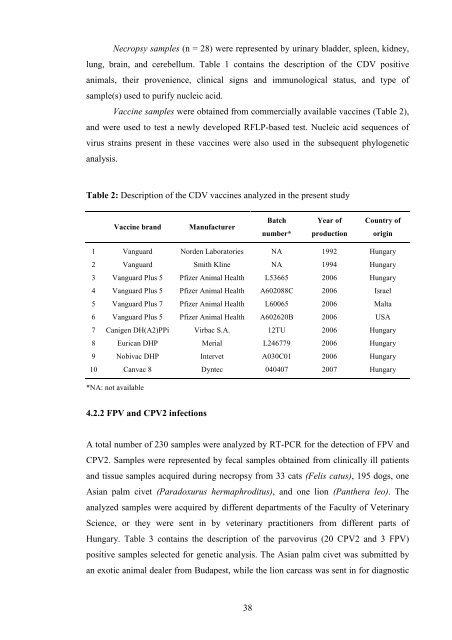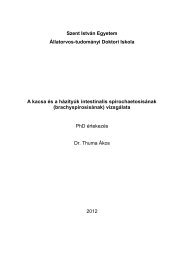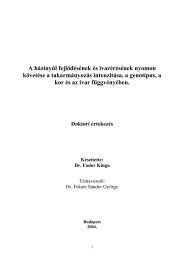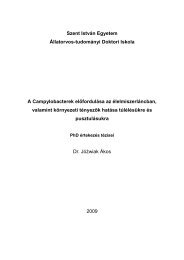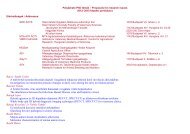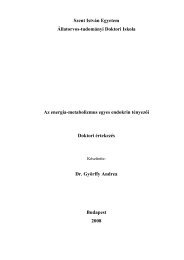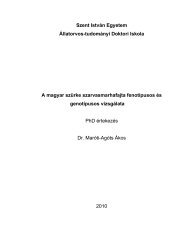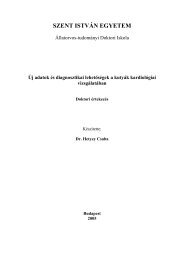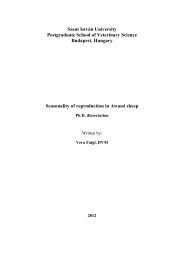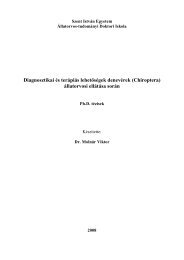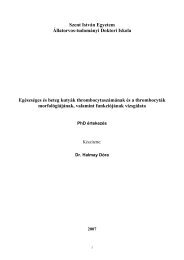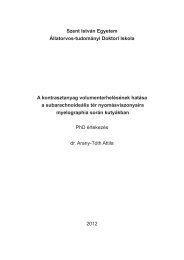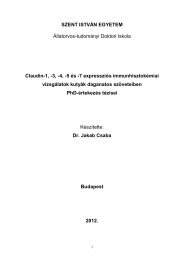PhD Thesis Demeter Zoltan
PhD Thesis Demeter Zoltan
PhD Thesis Demeter Zoltan
You also want an ePaper? Increase the reach of your titles
YUMPU automatically turns print PDFs into web optimized ePapers that Google loves.
Necropsy samples (n = 28) were represented by urinary bladder, spleen, kidney,<br />
lung, brain, and cerebellum. Table 1 contains the description of the CDV positive<br />
animals, their provenience, clinical signs and immunological status, and type of<br />
sample(s) used to purify nucleic acid.<br />
Vaccine samples were obtained from commercially available vaccines (Table 2),<br />
and were used to test a newly developed RFLP-based test. Nucleic acid sequences of<br />
virus strains present in these vaccines were also used in the subsequent phylogenetic<br />
analysis.<br />
Table 2: Description of the CDV vaccines analyzed in the present study<br />
Vaccine brand Manufacturer<br />
38<br />
Batch<br />
number*<br />
Year of<br />
production<br />
Country of<br />
origin<br />
1 Vanguard Norden Laboratories NA 1992 Hungary<br />
2 Vanguard Smith Kline NA 1994 Hungary<br />
3 Vanguard Plus 5 Pfizer Animal Health L53665 2006 Hungary<br />
4 Vanguard Plus 5 Pfizer Animal Health A602088C 2006 Israel<br />
5 Vanguard Plus 7 Pfizer Animal Health L60065 2006 Malta<br />
6 Vanguard Plus 5 Pfizer Animal Health A602620B 2006 USA<br />
7 Canigen DH(A2)PPi Virbac S.A. 12TU 2006 Hungary<br />
8 Eurican DHP Merial L246779 2006 Hungary<br />
9 Nobivac DHP Intervet A030C01 2006 Hungary<br />
10 Canvac 8 Dyntec 040407 2007 Hungary<br />
*NA: not available<br />
4.2.2 FPV and CPV2 infections<br />
A total number of 230 samples were analyzed by RT-PCR for the detection of FPV and<br />
CPV2. Samples were represented by fecal samples obtained from clinically ill patients<br />
and tissue samples acquired during necropsy from 33 cats (Felis catus), 195 dogs, one<br />
Asian palm civet (Paradoxurus hermaphroditus), and one lion (Panthera leo). The<br />
analyzed samples were acquired by different departments of the Faculty of Veterinary<br />
Science, or they were sent in by veterinary practitioners from different parts of<br />
Hungary. Table 3 contains the description of the parvovirus (20 CPV2 and 3 FPV)<br />
positive samples selected for genetic analysis. The Asian palm civet was submitted by<br />
an exotic animal dealer from Budapest, while the lion carcass was sent in for diagnostic


